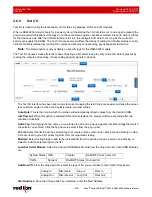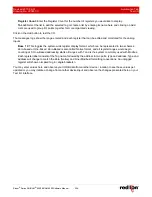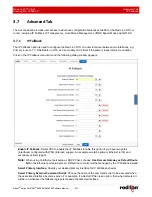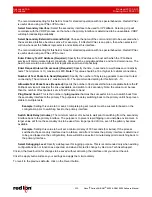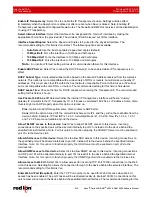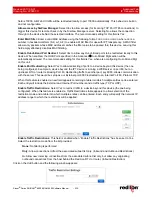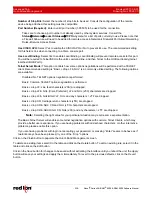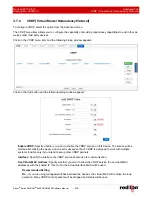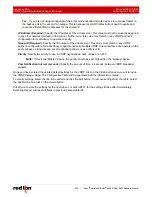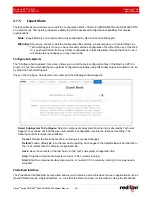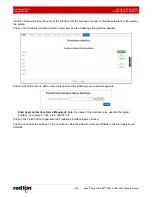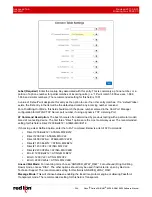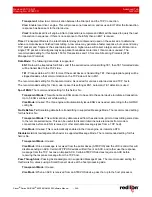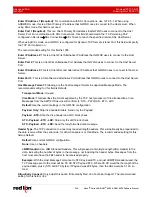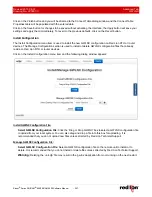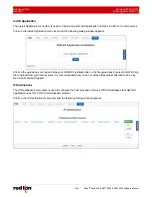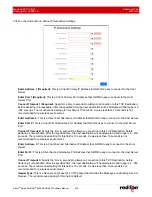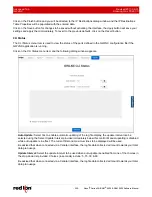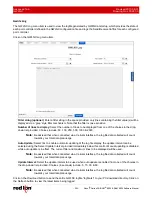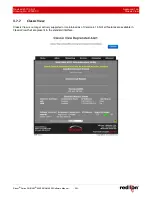
Advanced Tab
Revised 2017-08-31
VRRP (Virtual Router Redundancy Protocol)
Drawing No. LP0997-C
- 240 -
Sixnet
®
Series SN/RAM
®
6000 & RAM 9000 Software Manual
Yes
– If you are not using managed switches, this mode will allow remote devices to reconnect faster to
the backup unit in the event of an outage. This is because local ARP tables will not need to expire and
reacquire different MAC addresses for the shared IP.
IP Address (Required):
Specify the IP address of the virtual server. This value must not be currently assigned
to any other network interface on the subnet. Furthermore, this value must match in any VRRP partner’s
configuration for redundancy to operate correctly.
Group ID (Required):
Specify the ID number of the virtual server. This value must match in any VRRP
partner’s configuration for redundancy to operate correctly. Multiple VRRP Virtual interfaces can operate on the
same subnet, as long as each set of redundant partners uses a different ID.
Priority:
Specify the priority to use in VRRP negotiations. Valid values are 1-255.
Note:
If this is the “Master” device, the priority should be sent higher than the “Backup” device.
Peer Notification Interval (seconds):
Specify the amount of time, in seconds, between VRRP broadcast
packets.
Once you have entered the desired default settings for the VRRP, click on the
Finish
button and you will return to
the VRRP dialog window. The Configuration Table will be populated with the information entered.
To modify settings, select the line to be edited and click the
Edit
button. To remove settings from the table, select
the desired line and click on the
Delete
button.
Click
Save
to store the settings for the next reboot, or click APPLY for the settings to take effect immediately.
Selecting
Revert
, will reset all fields to previously saved defaults.



